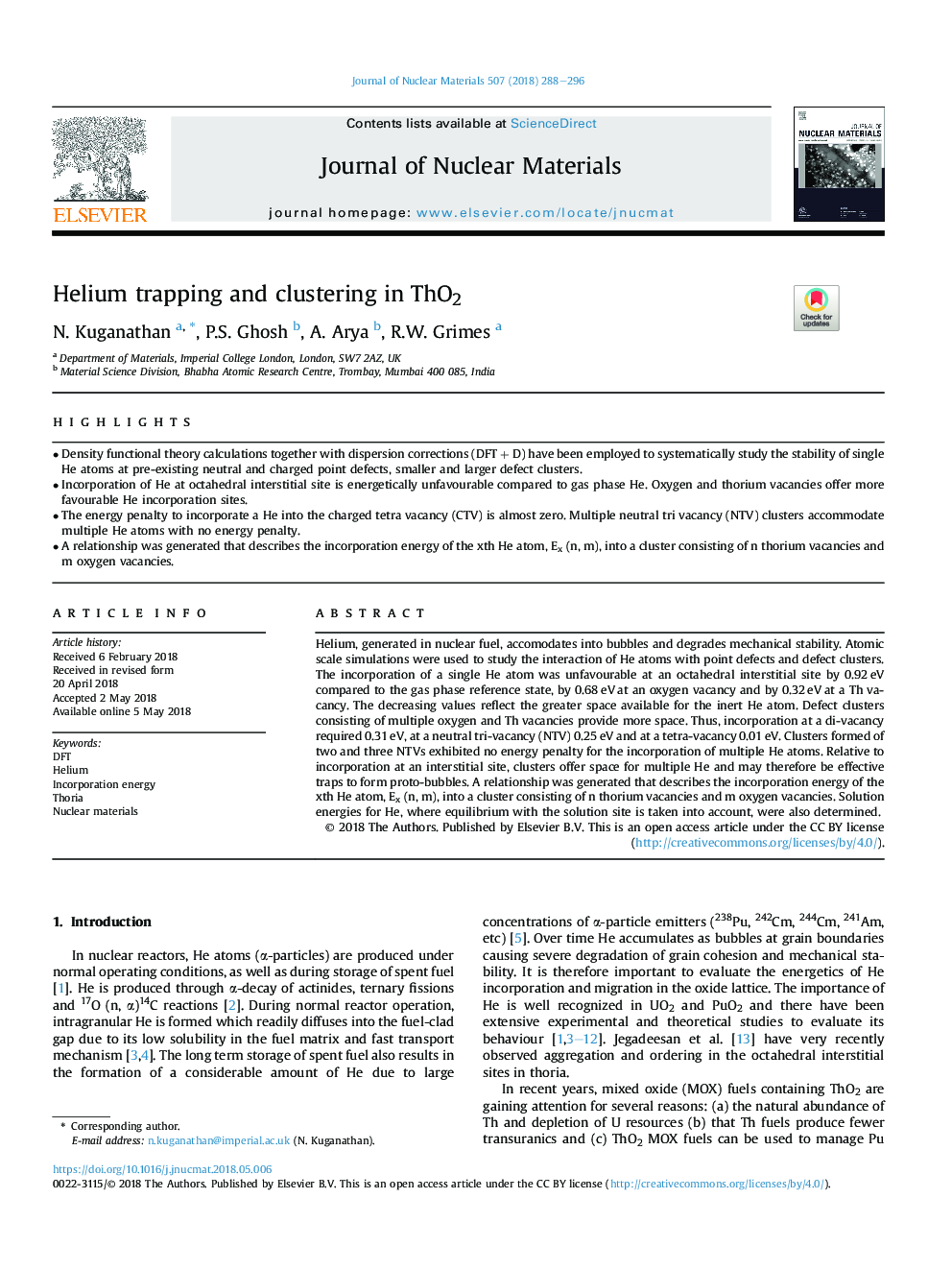| Article ID | Journal | Published Year | Pages | File Type |
|---|---|---|---|---|
| 7963143 | Journal of Nuclear Materials | 2018 | 9 Pages |
Abstract
Helium, generated in nuclear fuel, accomodates into bubbles and degrades mechanical stability. Atomic scale simulations were used to study the interaction of He atoms with point defects and defect clusters. The incorporation of a single He atom was unfavourable at an octahedral interstitial site by 0.92â¯eV compared to the gas phase reference state, by 0.68â¯eVâ¯at an oxygen vacancy and by 0.32â¯eVâ¯at a Th vacancy. The decreasing values reflect the greater space available for the inert He atom. Defect clusters consisting of multiple oxygen and Th vacancies provide more space. Thus, incorporation at a di-vacancy required 0.31â¯eV, at a neutral tri-vacancy (NTV) 0.25â¯eV and at a tetra-vacancy 0.01â¯eV. Clusters formed of two and three NTVs exhibited no energy penalty for the incorporation of multiple He atoms. Relative to incorporation at an interstitial site, clusters offer space for multiple He and may therefore be effective traps to form proto-bubbles. A relationship was generated that describes the incorporation energy of the xth He atom, Ex (n, m), into a cluster consisting of n thorium vacancies and m oxygen vacancies. Solution energies for He, where equilibrium with the solution site is taken into account, were also determined.
Keywords
Related Topics
Physical Sciences and Engineering
Energy
Nuclear Energy and Engineering
Authors
N. Kuganathan, P.S. Ghosh, A. Arya, R.W. Grimes,
